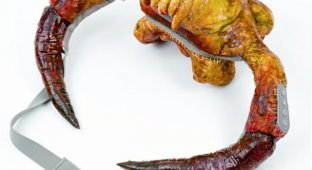Red beetle: everyone saw it, but didn’t pay attention (8 photos)
I present to you, the red-bodied velvet mite: it devours garden pests for breakfast, lunch and dinner. 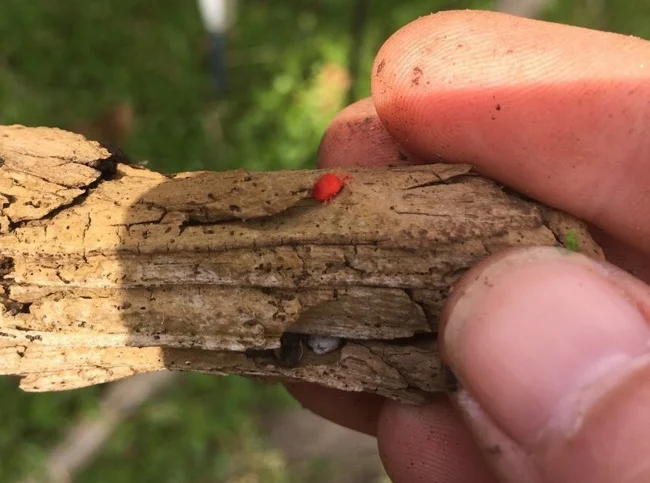
Probably everyone has seen such small red bugs at least once in their life, but never thought about what they are.
It is difficult to confuse the velvet mite with other arthropods of our region. The tiny half-centimeter-long thing is visible even among lush greenery - the arthropod is not afraid of bright images. The crimson body is densely covered with tiny hairs, like velvet. In a ceremonial dress, the tick cuts across Eurasia and North Africa. But the microfauna of these places knows: the tick's uniform is not just a play of colors, but a true reflection of its cruel nature. Its paws are up to its ears in someone else's blood! 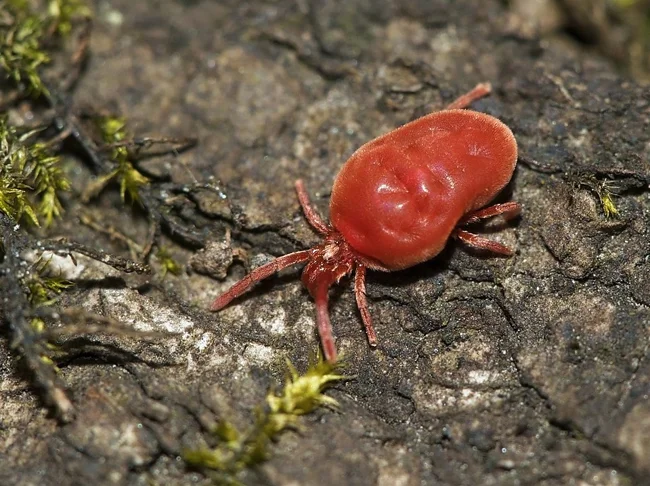
Most often, ticks actively explore the world in search of food after the rain - that is why in some countries the red beetle is called rain bug.
The red beetle begins to brutally destroy insects from the cradle. Having just hatched from the egg, the young fighter is looking for a target. It has no more than two weeks for everything, otherwise the larva will die of hunger. Any arthropod can become a victim: an annoying fly, a hungry locust, a stink bug. 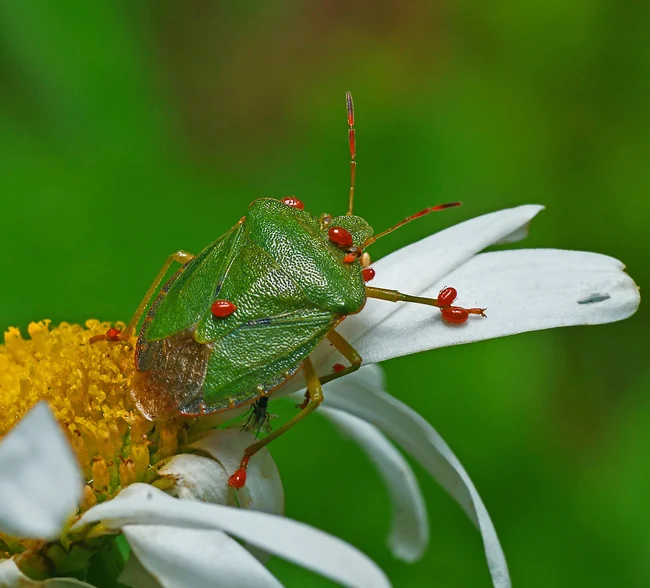
Red beetles are one of the few predators that are not afraid of the terrible stench of the green bug.
Once hooked, the larva crawls to the most tender and vulnerable places on the body of its victim. For example, to the folds of the abdomen, knees and places under the wings. The main thing is that the prey cannot reach there with its paw and scratch off the budding predator. Having chosen a place, the red beetle bites through the outer covers of the prey and drinks its fill of hemolymph - an analogue of blood in insects. At the larval stage, the ticks are easy to spot - they decorate the victim's body with a scattering of blood-red beads. 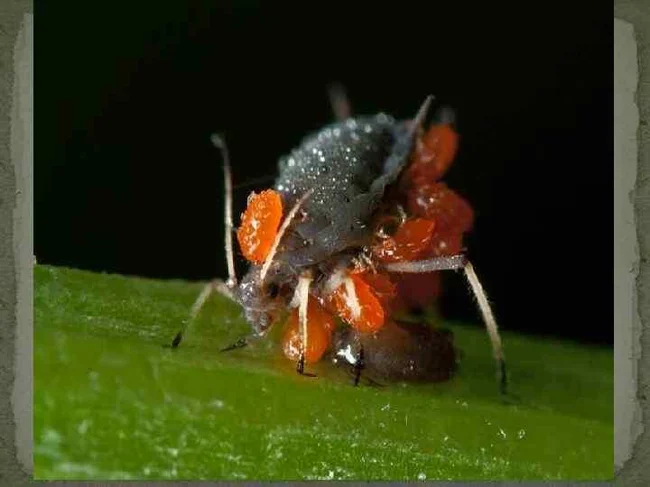
With their parasitism, the red beetle larvae do not allow summer cottage pests to reproduce excessively.
For a couple of weeks, the babies revel in other people's suffering, after which they molt and turn into adults. That's when all the fun begins. Unlike other types of blood-sucking parasites, adult red beetles are active predators. While the larvae only ruin the life of their victims, adult ticks annihilate all arthropods in their path. Arachnids, insects, their eggs — everything that the predator-bender stumbles upon is consumed. 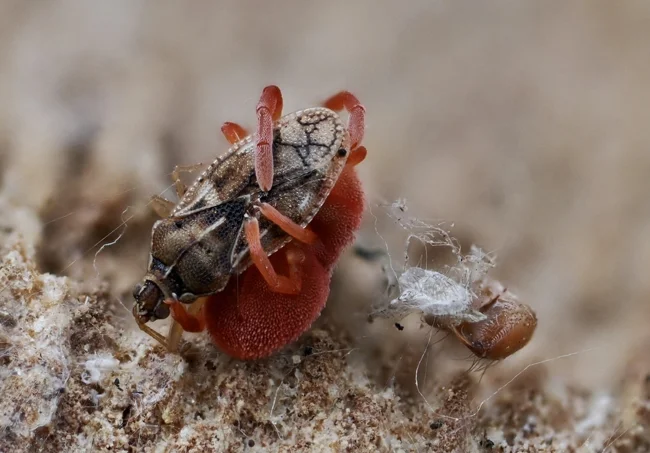
The red beetle can be compared to a real red demon that hunts for simple walking beetles...
Ticks deal with their victims like spiders. Having grabbed the unlucky bug in its tenacious paws, the predator slowly and leisurely drinks all the contents from it. The process takes from several hours to several days. Until the prey is nothing but an empty chitinous shell. 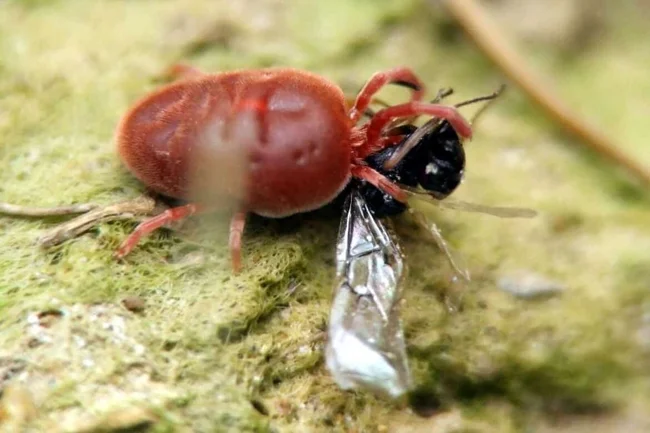
"You've already sucked all the juices out of me!"
It takes almost a year to develop from an egg to a sexually mature individual. During this time, a charming romantic awakens in a stern warrior! The mating games of ticks are like a slow dance: the arthropods circle opposite each other, tapping their paws on the body. The result of such movements is a clutch of a couple dozen eggs, which the female will lay in the soil. Thus, she will complete her life cycle and start a new wheel of suffering for the surrounding insects! 
To find their other half, red beetles communicate via the network. Literally: they secrete a special web - threads for communication, with the help of which they find a partner.
Of course, in a fit of fighting frenzy, not only pests are caught in the crossfire. But even so, red beetles remain the best garden pest controllers! It doesn’t take much intelligence to pour chemicals on the plantings to get rid of codling moths and root-borers. However, in this case, you won’t be able to count on a big harvest - along with the pests, you will kill all those who help the garden bloom and smell. The best solution is to create a working self-regulating ecosystem. And the red beetles are the highest predators and best helpers in it. 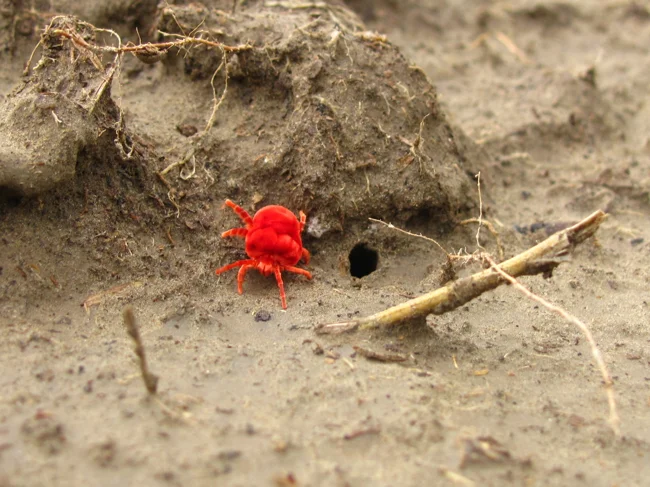
It is also worth noting that red beetles are not dangerous to humans. They can bite in theory, but in practice this does not happen, and they are not able to bite through the skin.



















